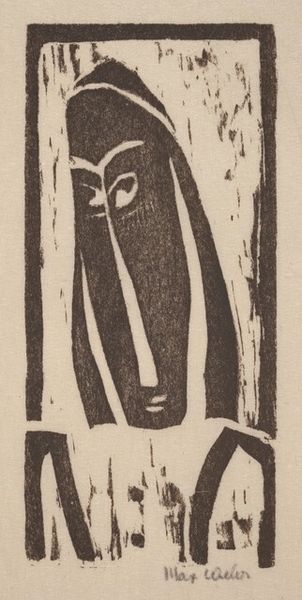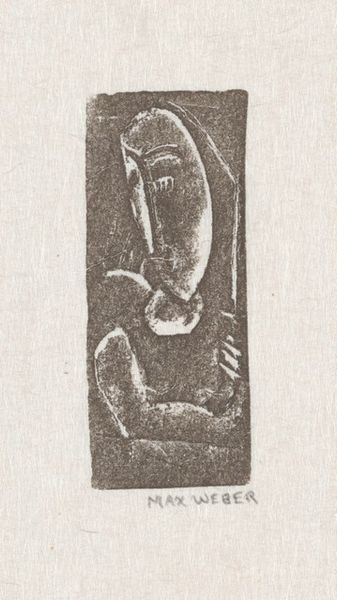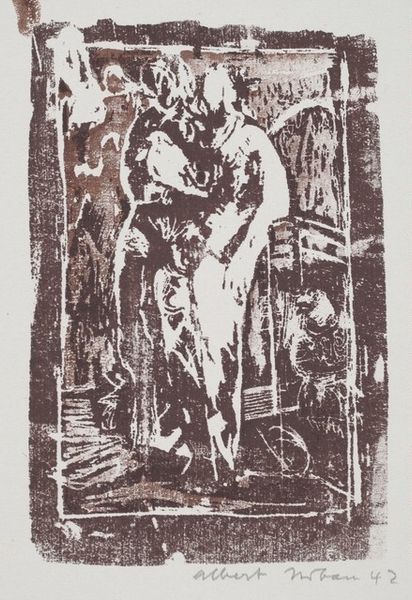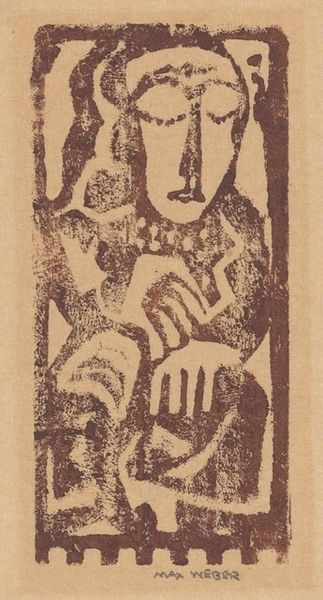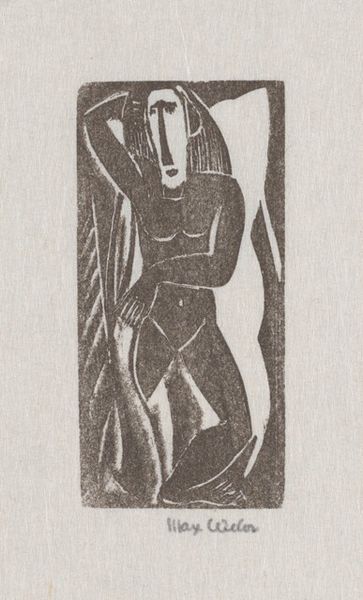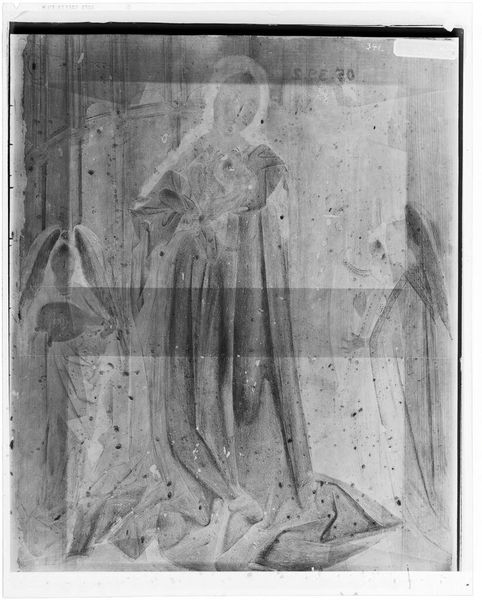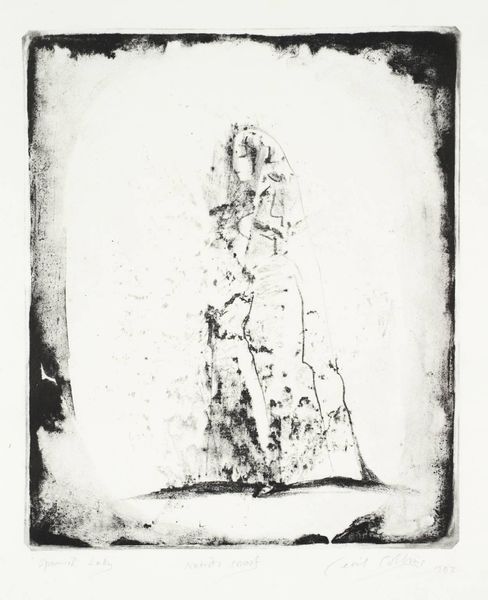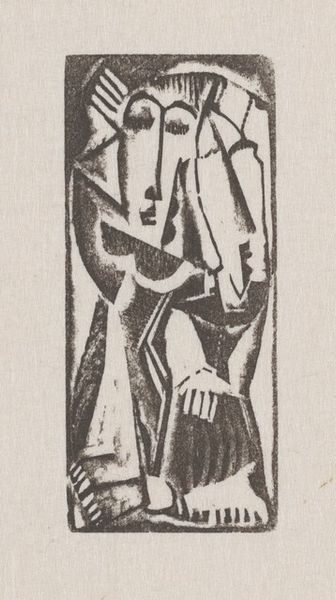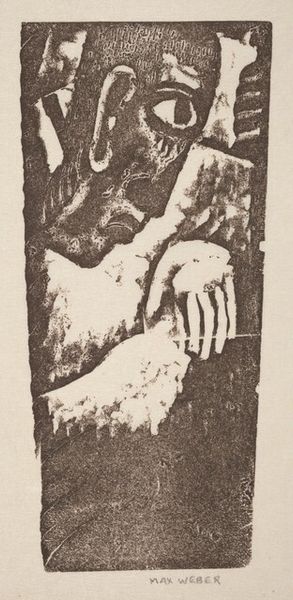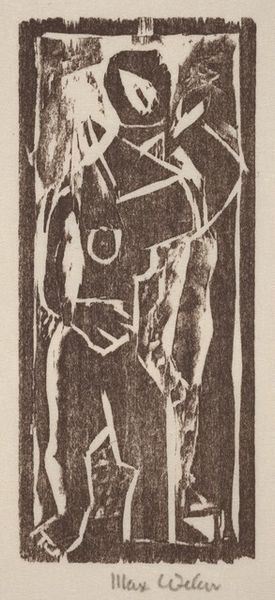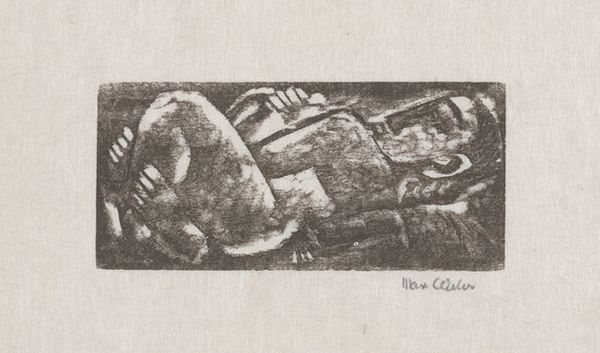
Dimensions: image: 9.53 × 5.4 cm (3 3/4 × 2 1/8 in.) sheet (folded): 24.61 × 16.19 cm (9 11/16 × 6 3/8 in.)
Copyright: National Gallery of Art: CC0 1.0
Editor: Here we have Max Weber's print, *Invocation*, thought to be created sometime between 1919 and 1956. The figure's pose is striking – almost protective. What do you see in this piece in terms of its cultural relevance at the time it was made? Curator: I see a potent example of Expressionism grappling with modernity and tradition. Weber, as a Jewish immigrant in America, often explored themes of spirituality and identity in his work. The "invocation" here, in my view, is a call for connection amidst the alienation of urban life. Considering the possible date range, how might post-war anxieties be influencing his art-making here? Editor: That's interesting. So the roughly hewn quality and distorted forms weren't just about aesthetics? Curator: Exactly. Expressionism, particularly after the World Wars, became a visual language for trauma and disillusionment. The figure's vulnerability, the starkness of the print medium – these speak to a fragility present in society at the time. The invocation then turns into something like, “Can humanity connect with itself in these troubling times?" What does the tree to the right of the figure suggest to you? Editor: I hadn't thought about the tree, it kind of blends in…perhaps the connection to nature provides some optimism. Curator: Or is it just another haunting presence in the Expressionistic landscape? Regardless, considering the rise of abstract art at this time, Weber’s continuing exploration of the figure seems all the more potent now. Editor: I agree, I initially thought it was just interesting visually but seeing its context enriches the viewing experience!
Comments
No comments
Be the first to comment and join the conversation on the ultimate creative platform.

